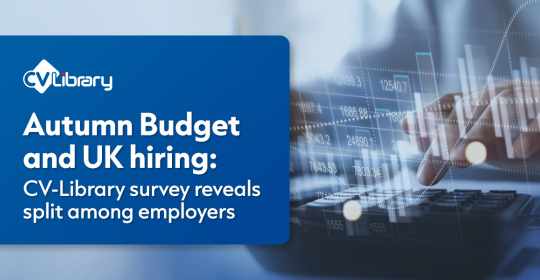Employers’ basic pay increase expectations over the next 12 months have fallen for the first time since Spring 2020, according to the latest CIPD Labour Market Outlook.
Having held steady at 5% for more than a year, UK employers expected basic pay increases for the year ahead have fallen to 4%, marking the first fall in pay expectations since the start of the pandemic. The median expected basic pay increase in the private sector has fallen from 5% to 4% since the last quarter while pay expectations in the public sector have fallen further from 5% to 3%.
The CIPD’s report also shows that fewer employers expect their workforce to grow than in previous quarters. Overall, a third (33%) of employers plan to increase their total staff level over the next three months while one in ten (10%) plan to decrease their overall staffing levels. However, many employers (38%) continue to report hard-to-fill vacancies and one in five respondents (21%) expect significant problems filling roles over the next six months.
In response to the report’s findings, the CIPD is highlighting the need for organisations to invest in workforce development and technology. This can help tackle skills gaps and shortages and improve productivity, enabling sustained growth.
Jon Boys, senior labour market economist for the CIPD, the professional body for HR and people development, said:
“We’ve seen a sustained period of high wage growth in response to a tight labour market, and high inflation pushing up the cost-of-living. Pay growth has helped individuals but it leaves employers with a higher wage bill to cover.
“To see a sustained return to growth, there needs to be a real focus on boosting productivity by investing in workplace skills and technology. It’s also in employers’ interest to communicate with employees their wider benefits package and improve job quality to compensate if they are planning to reduce base pay increases. The cost-of-living crisis is not over for many workers so finding other ways to help them besides pay, such as providing flexible working where possible to reduce commuting or childcare costs can make a big difference.”
This latest Labour Market Outlook report surveyed 2,006 employers in January 2024 about their approaches to pay, staffing levels and addressing vacancies.
Key findings from the report include:
Pay increase intentions fall across the board and in the public sector in particular
- Median expected basic pay increase intentions fell from 5% to 4%.
- Pay increase intentions fell to 4% in the private sector and 3% in the public sector, opening up the gap once more between the two, meaning it may become more difficult to attract and retain public sector staff.
- Early data suggests that to fund higher wage costs, employers are no longer accepting lower profits. Of employers who’ve had to raise wages over the past six months or plans to in response to hard-to-fill vacancies, fewer this quarter (37%) are taking lower profits, absorbing costs, or accepting higher overheads, compared to the past year.
Fewer employers expect their workforce to grow than in previous quarters
- The net employment balance – which measures the difference between employers expecting to increase staff levels in the next three months and those expecting to decrease staff levels – remains positive but has fallen from +26 last quarter to +22 this quarter, the lowest level since Winter 2020/21. Net employment Intentions remain strong in the private sector at +27 but have fallen sharply to just +6 in the public sector.
- Overall, a third (33%) of employers plan to increase their total staff level over the next three months while one in ten (10%) plan to decrease their overall staffing levels
- This picture masks more significant change in the public sector where nearly one in five (18%) employers are planning to reduce staffing levels.
Hiring remains strong, and hard-to-fill vacancies are rife in key sectors
- Recruitment intentions remain strong. Overall, two-thirds (67%) of employers plan to recruit in the next three months, rising to 82% of public sector employers.
- The level of employers who anticipate significant problems in filling vacancies over the next six months has fallen from 29% twelve months ago to 21% this quarter, indicating further easing in recruitment in the coming months.
- Two in five (38%) employers surveyed have hard-to-fill vacancies, rising to more than half (51%) of public sector employers. The level of employers in the private sector with hard-to-fill vacancies is significantly lower at 34%.
Boys continues: “This feels like a key moment in the UK labour market. The public and private sector gap in pay expectations is widening again, at a time of mounting pressures on public services. More widely, employer attention is shifting from helping staff weather the cost-of-living crisis to focus on business sustainability and growth, which will impact headcount in some places. It’s crucial the workforce is seen as a key driver of productivity, profitability, and value for organisations, rather than a budget line item that can be easily cut to save costs. Investing in skills and training, people management and productivity gains will be fundamental in helping organisations to become future-proof and better able to weather economic headwinds when they come.”







